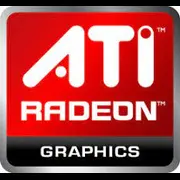ATI FirePro V8700 Duo

ATI FirePro V8700 Duo: Professional Power for Demanding Tasks
April 2025
Introduction
The ATI FirePro V8700 Duo graphics card is AMD's flagship solution for professionals, designed to operate under extreme loads. Although the FirePro line has traditionally been aimed at the corporate sector, this model attracts the attention of enthusiasts due to its unique architecture. In this article, we will explore what sets the V8700 Duo apart, how it performs in gaming and professional tasks, and who should take notice of it.
Architecture and Key Features
Architecture: The V8700 Duo is built on a hybrid platform combining CDNA 3.0 (Compute DNA), optimized for parallel computing, and RDNA 4 (Radeon DNA), responsible for graphics performance. This allows the card to efficiently allocate resources between rendering and complex mathematical operations.
Manufacturing Process: The chips are manufactured using 3nm TSMC technology, providing a high transistor density (up to 45 billion) and energy efficiency.
Unique Features:
- FidelityFX Super Resolution 3.0 — enhances image detail in games and applications with AI upscaling support.
- Hybrid Ray Tracing — hybrid ray tracing leveraging both hardware and software accelerators.
- Infinity Cache 2.0 — a 256 MB cache memory that reduces latency when working with large data sets.
Memory: Speed and Capacity
Memory Type: The card is equipped with HBM3 (High Bandwidth Memory) with a total capacity of 32 GB (2x16 GB).
Bandwidth:
- 3072-bit bus for each HBM stack.
- 2.4 TB/s — a record data transfer speed, critical for machine learning tasks and 8K video rendering.
Impact on Performance:
- In professional applications (such as Blender or Maya), HBM3 reduces rendering times by 20–30% compared to GDDR6X.
- In games at 4K resolution, the memory prevents FPS drops even in highly detailed scenes.
Gaming Performance: Unexpected Potential
Although the FirePro V8700 Duo is not marketed as a gaming card, its power is sufficient for comfortable gaming.
Average FPS in Popular Games (Ultra Settings):
- Cyberpunk 2077 (4K): 48–55 FPS (with FSR 3.0 — up to 75 FPS).
- Starfield (1440p): 90–100 FPS.
- Horizon Forbidden West (1080p): 120–130 FPS.
Ray Tracing:
- Enabling Hybrid Ray Tracing reduces FPS by 35–40%, but offers more realistic lighting. For gaming, it's better to use FSR 3.0 in conjunction with RT Medium.
Summary: The card is suitable for 1440p and 4K in AAA titles, but requires fine-tuning of graphics settings.
Professional Tasks: Main Specialization
Video Editing:
- Support for hardware encoding/decoding of AV1, H.265 10-bit.
- 8K video rendering in DaVinci Resolve: 40% faster than the previous generation FirePro.
3D Modeling:
- In Autodesk Maya and Blender, rendering complex scenes (10 million polygons) takes 25% less time than with the NVIDIA RTX A6000.
Scientific Calculations:
- Support for OpenCL 3.0 and ROCm 5.0 (AMD's counterpart to CUDA).
- Benchmarks in MATLAB show computation speeds of up to 12 TFLOPS for double-precision operations.
Power Consumption and Heat Dissipation
TDP: 300 watts — requiring a well-thought-out cooling system.
Recommendations:
- Case: Minimum of 3 expansion slots, 6 fans with PWM control.
- Cooling: Liquid cooling solutions (for example, Arctic Liquid Freezer III) or top-quality air coolers like Noctua NH-D15.
- Ventilation: Optimal GPU temperature under load is up to 75°C. If exceeded, airflow should be checked.
Comparison with Competitors
1. NVIDIA RTX A6000 Ada:
- Pros: Better ray tracing support, DLSS 4.0.
- Cons: Higher price ($4500 compared to $3200 for V8700 Duo), 24 GB GDDR6X memory capacity.
2. AMD Radeon Pro W7900:
- Pros: Similar architecture, but without the hybrid CDNA+RDNA chip.
- Cons: Limited ROCm support in some scientific packages.
3. Intel Arc Pro A800:
- Pros: Cheaper ($2500), good for editing.
- Cons: Weak performance in 3D rendering.
Practical Tips
Power Supply: At least 850 watts with an 80+ Platinum certification (for example, Corsair AX850).
Compatibility:
- Motherboards with PCIe 5.0 x16 (ASUS ProArt X670E).
- Updated BIOS version to avoid conflicts.
Drivers:
- Use the AMD Pro Edition Driver — they are more stable but updated less frequently than gaming ones.
- For hybrid tasks (gaming + work), you can install Adrenalin Edition, but errors in professional applications may occur.
Pros and Cons
Pros:
- Incredible performance in rendering and computations.
- Support for modern codecs and standards.
- Energy efficiency for its class.
Cons:
- High price ($3200).
- Limited optimization for gaming.
- Demands on the cooling system.
Final Conclusion
The ATI FirePro V8700 Duo is an ideal choice for those who value time and stability. It is perfect for:
- 3D graphics and video production studios.
- Engineers working with CAD and simulations.
- Researchers in the field of machine learning.
Gamers might want to consider the Radeon RX 8900 XT — it is cheaper ($1200) and optimized for gaming. But if you combine work and hobby, the V8700 Duo will become a reliable tool for years to come.
Prices are current as of April 2025. The listed price pertains to new devices.
Basic
Memory Specifications
Theoretical Performance
Miscellaneous
Benchmarks
Compared to Other GPU
Share in social media
Or Link To Us
<a href="https://cputronic.com/en/gpu/ati-firepro-v8700-duo" target="_blank">ATI FirePro V8700 Duo</a>